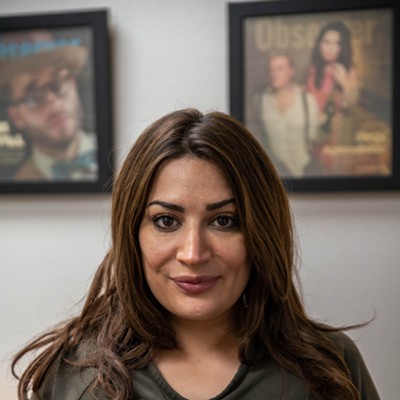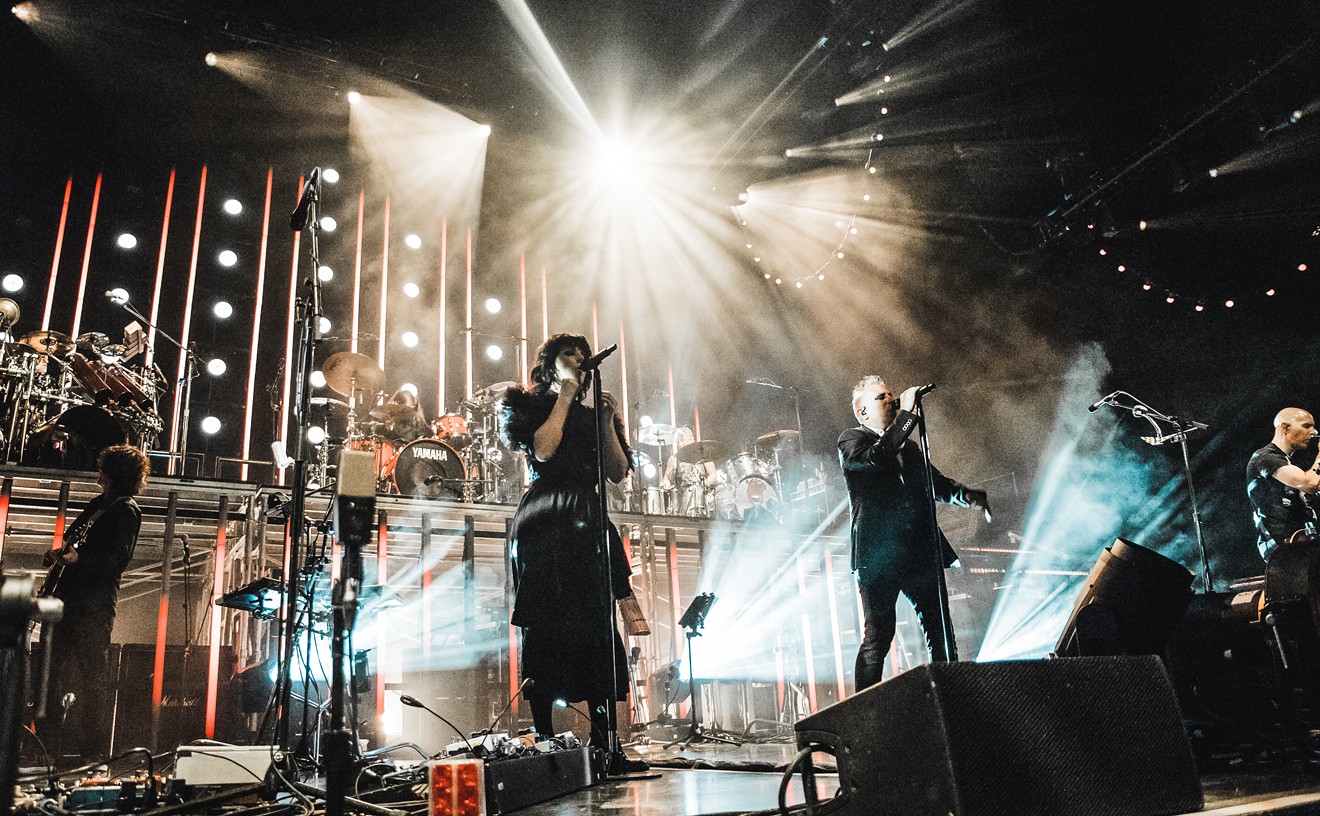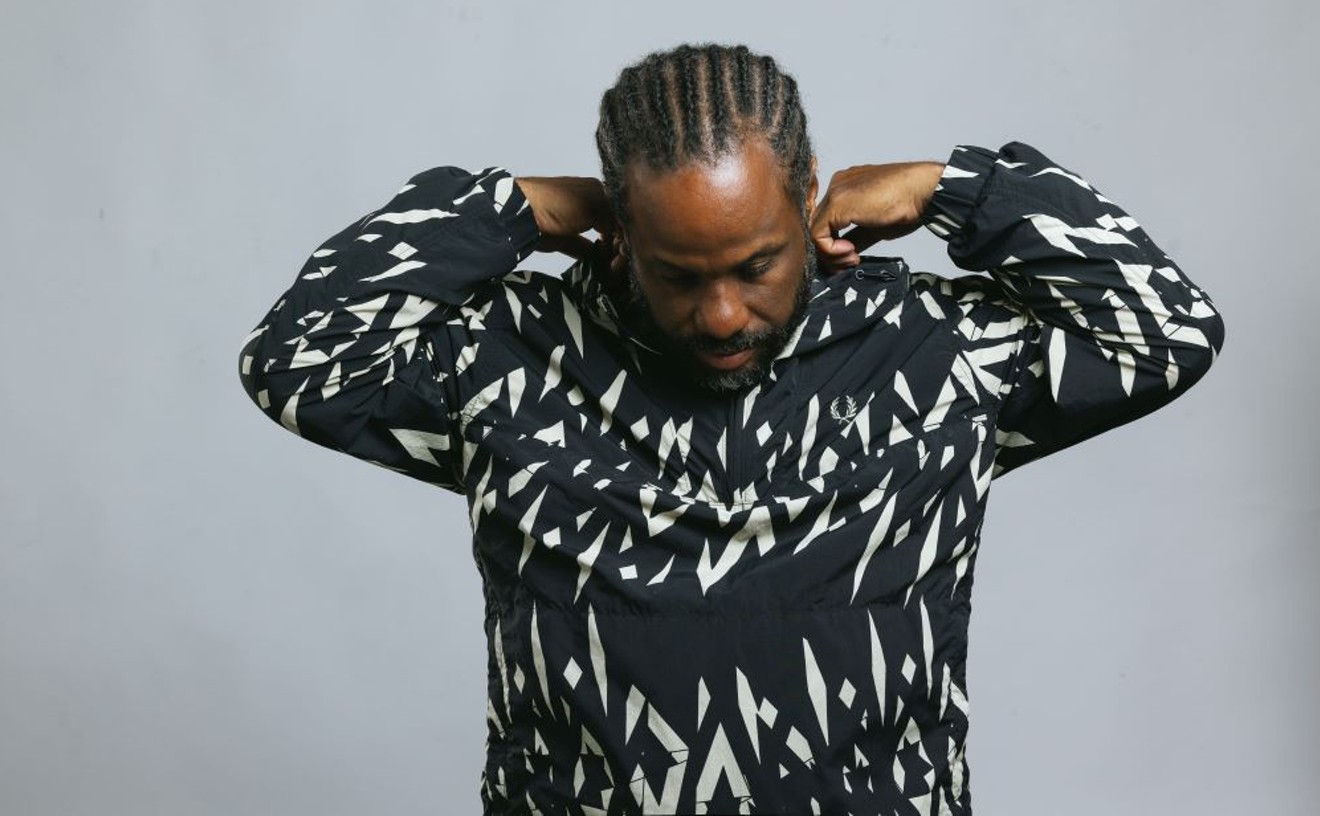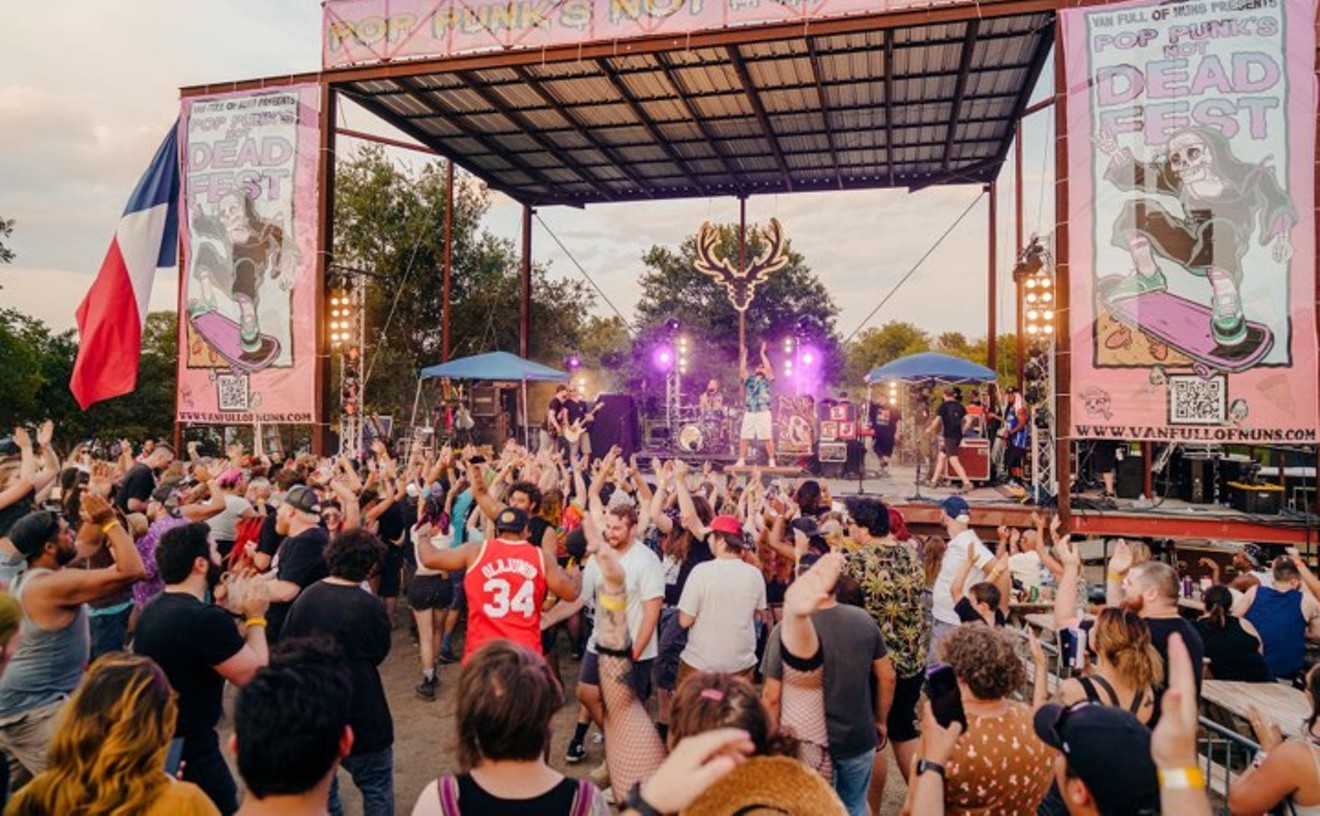In Bed With Mike Brooks
Concert photographer Mike Brooks has come to be regarded as a Dallas institution. Known for his wide-angled, dynamic and dramatic visual storytelling, when he shows up to an event, its stock rises. Every night after shooting, he drives for over an hour to get to his house in the country...
By Eva Raggio
March 4, 2019

Exploredinary
[
{
"name": "Air - MediumRectangle - Inline Content - Mobile Display Size",
"component": "18855504",
"insertPoint": "2",
"requiredCountToDisplay": "2"
},{
"name": "Editor Picks",
"component": "17105533",
"insertPoint": "4",
"requiredCountToDisplay": "1"
},{
"name": "Inline Links",
"component": "18349797",
"insertPoint": "8th",
"startingPoint": 8,
"requiredCountToDisplay": "7",
"maxInsertions": 25
},{
"name": "Air - MediumRectangle - Combo - Inline Content",
"component": "17105532",
"insertPoint": "8th",
"startingPoint": 8,
"requiredCountToDisplay": "7",
"maxInsertions": 25
},{
"name": "Inline Links",
"component": "18349797",
"insertPoint": "8th",
"startingPoint": 12,
"requiredCountToDisplay": "11",
"maxInsertions": 25
},{
"name": "Air - Leaderboard Tower - Combo - Inline Content",
"component": "17105535",
"insertPoint": "8th",
"startingPoint": 12,
"requiredCountToDisplay": "11",
"maxInsertions": 25
}
]
Concert photographer Mike Brooks has come to be regarded as a Dallas institution. Known for his wide-angled, dynamic and dramatic visual storytelling, when he shows up to an event, its stock rises. Every night after shooting, he drives for over an hour to get to his house in the country.
Van Alstyne, Texas, is the sort of town to have a bar called the Cowboy Bar, where they sing Hank Williams on karaoke. Brooks has a big house with a yard that blends into the boundless land. Several of his photos are blown up on large canvases in the living room walls. His chicken coop, which he built himself, is sturdier than most Dallas homes.
Brooks had a pig until recently — he had to give it away because it was upsetting the social dynamics between his dogs. Technically, the pig has gone on to reproduce, but Brooks jokingly describes this event as a romantic chapter out of The Notebook.
He lies on his bed, which has a frame he added onto an old road sign for Route 77, belonging to his wife Kristen, who added lights to the back of it. On a nearby wall is a picture of a Banksy.
“I love his stuff because it’s biting,” Brooks says, “I like dark humor.”
He was born in Cleveland, but his mother moved the children to Honolulu when he was 2. He grew up on the beach, in a house surrounded by a 500-acre ranch by the mountains, with horses and a swimming pool. When he was around 9, his mother started a children’s camp, and he spent every summer for five years running around with 30 to 40 strange children at a time.
Brooks jokes that the experience didn’t instill a sense of mindful community, and that he’d sleep alone in a tree house by the camp.
Brooks went to the same private school from first grade through high school graduation, that was later attended by former President Barack Obama.
“So that’s a fun fact for you,” Brooks says, adding that they never crossed paths.
Brooks was a lifeguard every summer at a different beach. He surveyed the Pacific Coast “looking for surf” and “got out of Mexico two hours before our visas expired,” he remembers.
Brooks spent three years first at the University of California at Berkeley, in the mid-‘70s, where he says the campus’ atmosphere was still fairly political.
“I was kind of astounded by it,” he says of Berkeley’s militant activism. “I became less liberal the longer I spent at Cal.”
He and his brother made furniture out of the plywood that shops used to cover their windows when riots broke out. He remembers watching police take pictures of demonstrators as other demonstrators threw things at the police.
“That was like every Friday,” Brooks says.
The Bay Area still had hippies walking its streets.
“I fell in with this group of metalheads,” Brooks says. “Name one of the traditional drugs, and all of that was there in large quantities.”
For the sake of Brooks’ children, let’s just say he didn’t inhale. He was in fact a water polo player, and his national championship photo hangs in his present-day living room. It takes an average of 10 minutes to make out Brooks from among his team as he was then, mustachioed and long haired.
The first movie he remembers seeing was The Sound of Music at its grand opening in Waikiki, after his mother found a way to get tickets.
“We didn't have a lot of money, but she was very determined and persuasive,” he says, calling his mother a “character,” who got an architecture degree in her 60s.
He was an independent film major and studied film criticism. He transferred to San Francisco State for its film production program and worked as a courier, driving up the coast for 300 miles per day.
Brooks hardly watches any TV or movies and prefers consuming fiction through the written word, making the time to read 40 or 50 books a year.
He looks back at trying to enter the workforce with an art degree and mockingly makes the “Ka-ching” sound of an old register. He’d owned cameras since high school and learned of their mechanisms by working at camera shops, first in San Francisco’s Brooks Cameras, no relation, and later in a Seattle-area shop known for a film taken by its owner in 1940 of the Tacoma Narrows Bridge collapsing by the force of high wind — which had become a famous lesson in physics.
He married and had two sons, and moved with his family to different states when his mother referred him to work on a house that she had designed, and he ended up working as a carpenter for 10 years. Brooks laughs at the idea that he’s the exact person you’d want around if you were in need of a skilled survivalist.
“Yeah,” he says, “as long as you have a hammer and power.”
Brooks ended up getting hurt on a job in Phoenix when the scaffolding on the driveway that he and his team were putting up broke off and several of the workers were injured. It was a million-dollar home, but he received no workers’ comp.
“That’s the first time I screwed up my hip, and that was the last day I worked professionally as a carpenter,” he says.
Brooks could barely walk and took a job with his brother-in-law, who was starting up a company in Texas. Both the state, and the job, were unknown territory.
“I’d never seen a computer or anything before,” Brooks says, “and suddenly I was working for a software company.”
He went back to night school and remembers falling asleep at the campus library with his face in a book. The company was bought by Intuit, where Brooks still works as “a product donor, sort of a product manager.”
He first moved to Frisco, back when they still had whorehouses and no grocery store. After he divorced his first wife, he raised his sons on a large bit of land up north. When they got older, he started going out himself.
A coworker who was in a band invited him to a show where they would be opening for Mother’s Anthem. Brooks brought his camera and got hooked.
“I took one picture of them and by today’s standards I wouldn't even have kept it,” he says. “But when I looked at it I go, ‘Oh, shit,’ because it was all dramatic lighting, and it was one of those rock 'n' roll pictures.”
He started snapping photos in Deep Ellum several times a week on and off for a decade. On one occasion, he met a few friends standing with a “lovely-looking blonde,” who turned out to be his now-wife Kristen, whom he married around five years ago. She taught college-level English to foreign students for 20 years and now sells her own line of soaps. The couple lives with her teenage daughter and her son, who’s 19.
An act of fake-it-till-you-make-it confidence, coupled with serendipity, propelled Brooks into professional photography. The same friend who introduced him to Kristen had won tickets to see Jeff Beck at the Verizon Theater through a Dallas Observer giveaway. She offered Brooks the tickets, who drove to the building to pick them up and found the words “includes club entrance” printed on them.
“Whatever that is,” Brooks says.
He decided to take his gear through the venue’s back entrance, strapped with cameras all around him.
“And they've got some guy who’s obviously not very familiar with security,” Brooks says. “He goes, ‘Do you have a photo pass?’ And I go, ‘No, I don’t need one.’ And he just let me in.”
Brooks went down to the photo pit and was given the artist’s shooting stipulations.
The next day, he emailed the pictures to the Observer, along with a note relating the anecdote, and received a phone call with interview questions from the then-music editor, who published the story about Brooks’ sneaking in, along with the photos.
Brooks goes over to the PC at his desk, to find the story online. It’s from 2011, when he continued sending pictures of different shows into the publication. Soon after, he was put on the payroll.
“That’s when I became a professional music photographer,” he says.
Brooks’ standout experiences include shooting The Rolling Stones close to the stage, as well as AC/DC at one of their last shows.
“I like a look that I would consider cinematic,” Brooks says. “A lot of depth.”
Of his style, he says: “It's usually pretty easy to say, ‘That looks like one of Mike’s pictures.' Just like Cal (Quinn) or Karlo (Ramos). That's what I admire most. If someone looks at your stuff and goes, ‘I don't know who took that,’ I think you're still searching for something and emulating instead of creating.”
Brooks ponders photographers’ role as both artist and documentarian.
“You get both,” he says. “I was an art student; I want to create a piece of art with a small ‘a’ and I’m expecting that because it’s photography, a record will be created of this place in time.”
He references the opening shot in Psycho, which begins high above the city of Phoenix, ultimately making its way through a window to an office where the first scene takes place.
“That’s an establishing shot,” Brooks explains. “If you’re gonna cover a story, you want some of that context, the crowd, the venue. You don’t get a real feel for the show by going tight on somebody’s face; that could be anywhere.”
Brooks likes to move unseen through the crowds.
“I like saying hi and I’m not standoffish,” he says. “I want to be non-existent. I want to kind of blend in.”
His inconspicuous at-work nature had never caused him any issues until recently, when he took a picture of a singer who was performing with her back to the street, visible through a large glass. He was inspired by the image of a crowd facing toward a budding artist, but her boyfriend misinterpreted his actions (and wasn’t tipped off by the sight of an expensive camera), and came out of the venue to accuse him of taking pictures of her backside, which was, incidentally, covered by a long coat. Brooks posted the picture and the story, where his accuser outed himself by continuing to make his argument.
Brooks received hundreds of comments, with endorsements in his defense. At this point in the Dallas culture scene, admitting to not knowing Brooks, and even worse to call him a creep, is to announce oneself as an amateur.
“Everyone knows who he is,” Brooks jokes of himself. “I’m like Bob.” He’s referencing “Keyboard” Bob, a constant Deep Ellum figure, and documentary subject, found frequently dancing to live music and asking seemingly anyone to give him a ride or buy him fries.
Brooks is uninspired by work that highlights everyday objects or nature.
“I’ve been asked to judge the Fort Worth Camera Contest and it always amazes me,” Brooks says. “You see a picture of a piece of driftwood and a picture of a leaf on the ground. I just wanna go, ‘Do you not know anybody?’ Not even you are gonna want to see that picture in a year.
“If I asked you to find old pictures that you've had for years and tell me which ones are special to you,” he continues, “you’re gonna pick out a picture of your grandma or someone you used to know. These are the things that are important, the human condition.”
Last summer, Brooks spent a week with the Vandoliers as they recorded an album in Memphis. For their cover art, they chose a test photo Brooks had taken on an old film camera of railroad tracks in the country.
“Which is the most stereotype picture you can take,” he says. “It's the kind of picture I would've told people in the photo club, ‘What the fuck are you taking railroad pictures in the country for?’ But they flipped the photo upside down, so it has an uneasy feel to it.”
These days, Brooks is getting ready to take on a project, a chain of environmental portraits based on each subject’s last recommendation, like “a matrix or a chain letter,” he says.
Often, Brooks will catch a shot like, recently, of Jack White playing baseball, but his camera’s focus is on local performers.
“Some people think they want to take pictures of music,” he says, “but really they want to take celebrity pictures. If they wanted to take pictures of music, they wouldn't be clamoring about not getting photo passes to these big shows, they'd be down in Deep Ellum taking pictures of all these marvelous musicians where, worst-case scenario, you pay $10 and see somebody who’s really good at their craft and maybe even wants their picture taken.”
Brooks discovers more new bands than a millennial who’s just downloaded Spotify. He praises Rosegarden Funeral Party for the care put into their visual, as well as musical, presentation.
“I get it if you just wanna play music and get together with your buddies,” Brooks says, “but if you wanna try being a professional musician,” he pauses, “I’m gonna frame this in a positive way,” he continues, without the aforementioned positivity. “It pisses me off that you don't think anything about how you look or how you perform,” he says, this time more positively. “I appreciate bands that have some sense that it’s performance when you're onstage.”
Brooks talks about artists who rebel against an obsessively visual environment dictated by Instagram’s increasing influence and rejects the clichéd sentiment of “being just about the music.”
“Every time I hear that I want to punch someone in the nose,” Brooks says. “If you realize that’s the world that we’re living in, then you need to leverage it. Whatever you are I think you should own it honestly — whether you’re a pretty girl or an old man. But if you’re trying to come up in the world, you should have some idea that most people find new music on YouTube. It’s a visual media.
“It’s a package deal more than ever,” he says. “Otherwise, just sell me a CD.”
He’s drawn to musicians, Brooks says, because “you’re attracted to things you can’t do,” he adds. “It’s like shooting fish in a barrel. Musicians are stuck onstage, they really can't run away,” he laughs.
While Brooks has an affinity for the “inherently interesting” nature in humanity, he still prefers not to engage too much with his own kind.
“Yeah, it’s probably as more of an observer than as a participant,” he concedes, before going off to tend to his chickens.

KEEP THE OBSERVER FREE...
Since we started the Dallas Observer, it has been defined as the free, independent voice of Dallas, and we'd like to keep it that way. Your membership allows us to continue offering readers access to our incisive coverage of local news, food, and culture with no paywalls.
You can support us by joining as a member for as little as $1.
Eva Raggio is the music and culture editor of the Dallas Observer. She began freelancing for the Observer in 2013 and joined the staff full-time in April 2019. Prior to that, she wrote for publications such as Nylon, Playboy and D Magazine. In her role, Eva writes and publishes profiles of both local and regional musicians, previews upcoming events and provides guides on the best of Dallas’ entertainment scene.
Contact:
Eva Raggio
Follow:
Instagram: @?hl=en


Newsletter Sign Up
Enter your name, zip code, and email
I agree to the Terms of Service and
Privacy Policy
Sign up for our newsletters
Get the latest music, news, free stuff and more!
Trending
Use of this website constitutes acceptance of our
terms of use,
our cookies policy, and our
privacy policy
The Dallas Observer may earn a portion of sales from products & services purchased through links on our site from our
affiliate partners.
©2024
Dallas Observer, LP. All rights reserved.
Do Not Sell or Share My Information
Do Not Sell or Share My Information












